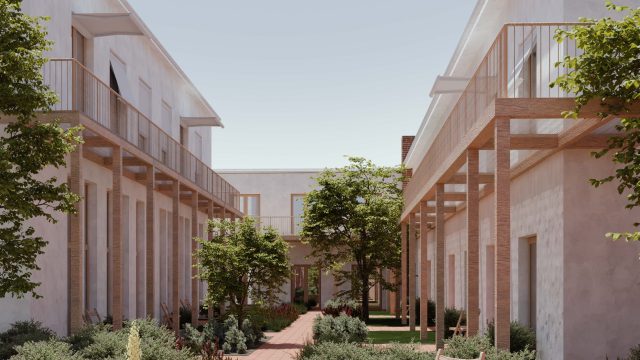For newly built properties, the energy requirement will be further tightened, which could cause many problems, as it will not be the same as the design requirement, but stricter! From 2021, only buildings with near-zero energy requirements will be allowed to be put into use in Hungary. This means that the building will have to meet the requirements of the BB energy rating. According to the National Register of Buildings, this is only 3.59% of the buildings with an energy rating (2019 data).
The requirements apply not only to the building but also to its operation, so they also specify the share of renewable energies and look at the relationship between the building’s orientation and its energy performance. In Decree 7/2006 TNM, there are five points on requirements for new buildings:
- Requirements for the heat transmission coefficients of the envelope and glazing structures
- Requirements for the specific heat loss coefficient
- Requirements for the overall energy performance
- Risk of overheating of buildings in summer
- Specifications for the technical building system
Building materials according to the new energy requirements
The building materials needed to meet the more stringent new energy requirements are available domestically, but it is suspected that without regulation, they would not be used by builders because of the cost of the technology.
- In insulation, for example, the former EPS (expanded polystyrene: a thermoplastic, foamable, cellular rigid foam made from polymerised styrene) insulation is being replaced by graphite materials with better thermal insulation properties, or PIR foams. The reason is that they can achieve the required thermal insulation value in half the thickness.
- For fire protection and humidity reasons, rock wool insulation is becoming the preferred choice.
- Smart bricks” are now available for construction, which have a much higher thermal insulation capacity due to the modification of the brickwork and the filling of brick cavities with thermal insulation.
- Higher quality adhesives are also needed to meet the requirements.
Stricter energy requirements and costs
Higher costs are due to compliance with mandatory renewable energy shares (e.g. installation of solar panels, heat pumps) rather than building materials. However, the difficulties associated with this change are reflected as benefits in terms of comfort and overheads, not to mention environmental benefits. Requirements for new build private properties based on permit and occupancy dates:
| Authorisation: 1 Jan. 2018 – 31 Dec. 2020 (based on TNM Decree 7/2006, for the period after 01.01.2018) |
|
| date of entry into use: | |
| 1 Jan. 2018 – 31 Dec. 2020 | Annex 1 Parts IV and V + Annex 5 (cost-optimal level of requirements) |
| after 1 Jan. 2021 | Annex 6 (near-zero energy building) |
| Authorisation: after 1 Jan. 2021 (based on TNM Decree 7/2006, period after 01/01/2021) | |
| after 1 Jan. 2021 | Annex 6 (near-zero energy building) |
Requirements for new construction of buildings owned or occupied by public authorities, based on permit and occupancy dates:
| Authorisation: 1 Jan. 2018 – 31 Dec. 2020 |
Decree TNM 7/2006 after 01.01.2018 |
| date of entry into use: | |
| 1 Jan. 2018 – 31 Dec. 2018 | Annex 1 Parts IV and V + Annex 5 (cost-optimal level of requirements) |
| after 1 Jan. 2019 | Annex 6 (near-zero energy building) |
| Authorisation: after 1 Jan. 2021 | Decree TNM 7/2006 after 01.01.2021 |
| after 1 Jan. 2021 | Annex 6 (near-zero energy building) |

